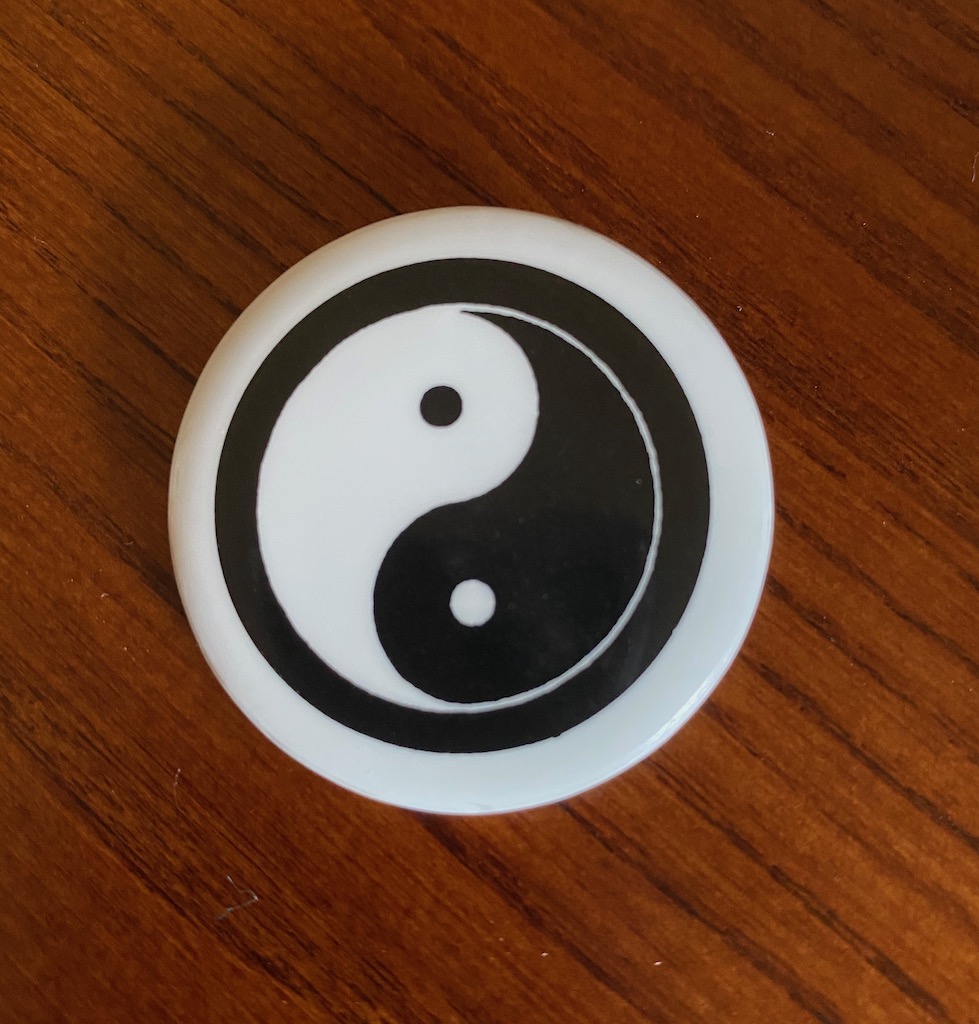I’ve loved the yin/yang symbol from the first time I saw it as a girl. I wasn’t sure what it meant, but recognized something mysterious and true. Over the years I’ve come to understand more about the dynamic it represents, and life continues to teach me about what it means.

The symbol shows the opposites of yin and yang in a dance. It depicts the endless cycle of one side growing into fullness, at which point it gives way to the other. That’s why the seed of the opposite appears as a small circle in the middle of the widest point.
A better word than “opposite” for the forces in play is “complementary,” which suggests not so much either/or, but rather both/and. The complementary forces are two sides of a single coin. Each would be meaningless without the other. They are not separate, even though they are as different as they can be.
The pandemic we’re all living through is my latest teacher about what this powerful symbol embodies. A virus unleashed for which we have no defense and no treatment is devastating—to our health, our economy, and our way of life. At the same time, at no point in my lifetime has it been this easy to see how interconnected our lives are. We had forgotten that.
There are many two-sided effects from the virus. The limitations that constrain daily life are burdensome. Yet the many things we can no longer do has brought spaciousness to our schedules. Shut-downs have issued an invitation to explore what previously was edged out of the calendar. We’ve had to give up in-person gatherings for Zoomtime, but in exchange we can include others without the limitations of geography. Remote meetings have been around for years, but we needed a push to find out collectively how well it can work. In-person classes and meetings draw able-bodied people from a limited geographic area. Technology breaks open the possibilities as those barriers disappear. The tossed coin spins through the air in a mesmerizing pattern of dark and light.
The monumental shifts we’ve experienced have happened with unsettling speed. Practices that only a few months ago seemed carved in stone have now crumbled. Whether the change is welcome or painful, we have an immediate sense of the impermanent and illusory nature of our institutions and ways of life.
Finding out that broad changes are indeed possible within a short span of time threatens our sense of security and stability. Yet in another two-sided truth, it also offers a sense of freedom and possibility. We’ve learned that our shared perception goes a long way toward creating our reality, which is true in times of stasis as well as change. Ideas held by enough people become our collective experience. The world we can envision is a world we can make, however far from our current reality it may be. We know this in a way we did not when this year was new.
The changes brought by the virus are not the only challenges to our country; its yin/yang lessons apply elsewhere. In the upheaval of our time we’re witnessing a political arsonist set fire to our nation’s institutions. It’s traumatic, like watching wildfires destroy old growth forest. I’m among the grief-stricken as the canopy of justice, responsibility, and protection burns. Yet after a forest fire comes new growth. A diversity of life emerges with plants that could not flourish in the dense shadow of the former trees.
In everything happening in our country and around the world, something bigger than we can see is at work. We all have a part to play in its unfolding, in this dance of dark and light. The flames will eventually burn out, the sunlight will touch the earth in new places, and seeds long dormant will break open. The world will be remade once again, and we can each contribute to making it stronger and better for all of us.
A Japanese poet and samurai named Mizuta Masahide, who lived over 300 years ago, understood the yin/yang nature of the world. These lines of his endure:
Barn’s burnt down—
now
I can see the moon.
These lines offer the revealed moon as the round white circle in the yin/yang symbol, seeding new light in an expanse of dark.
